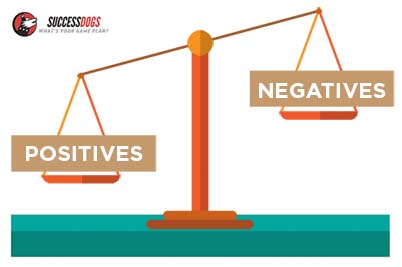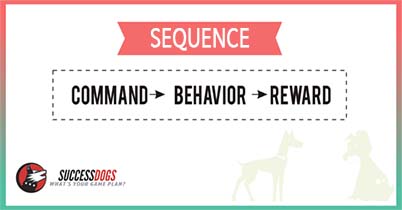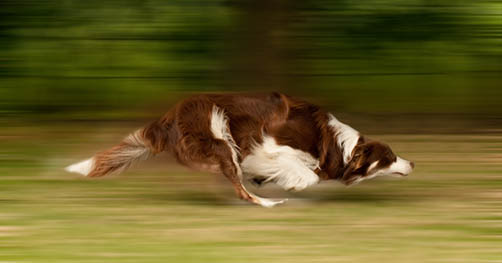The Ultimate Guide To Training A Dog To Come On Command
Does your dog ignore you when you call him? And does he respond only after you’ve called him maybe three or four times?
You’re not alone—I understand what you’re going through. You see, my dog, Onyx (a purebred Siberian husky), wasn’t always the perfectly behaved dog she is now. There was a time when she would completely ignore me when she was in the backyard sniffing the grass.
I would have to call her four or five times before she even looked at me. And it was so frustrating because I knew she could hear me, yet she was choosing to ignore me and continue sniffing the grass.
So, in this short article, I’m going to share three of the most important lessons I learned while training Onyx to come to me on command.
Lesson #1 – Understanding your dog’s point of view.
Whenever you call your dog to you, the dog has a choice of either dropping whatever he’s doing and coming to you or continuing what he’s doing at the moment (like sniffing the grass.)
Every time you call him, your dog will evaluate the positives and negatives of this choice.

For example, if your dog believes that you’re going to give him a delicious steak if he comes to you, this belief most likely will dwarf any other choices in his mind.
Your dog will evaluate the options: sniffing the grass or eating a steak. Simple choice, right?

Yet many dog owners don’t realize that this process of choice also operates in reverse. For example, if your dog believes you’re going to punish him and yell at him if he comes to you, it will be an easy choice to keep sniffing the grass.
So whenever you want your dog to come to you, think about what’s in it for your dog. I’m not saying you should bribe your dog to come to you, but you do have to be aware of what you’re offering your dog.
Praise and play go a long way. Imagine if you gave your dog total undivided attention for sixty seconds every time he came to you by playing tug-of-war or having a wrestling session. That would totally change his perceived value of coming to you.
You also have to be aware of what your dog is doing and how much of a reward it is when you call him to come to you. Remember—not every reward has equal value in your dog’s mind.
For example, let’s say your dog is running after a squirrel in the backyard. The reward level for this activity would be through the roof; even a steak might not be enticing enough to get him to stop chasing the squirrel.
So, with Onyx, who loves to sniff the grass in my backyard, I know that she gets the most value from this behavior in the first five to ten minutes. After this amount of time, it becomes a little boring for her, and this presents me with the best opportunity to call her to me.
Training your dog to come on command is a game of balancing what you offer (giving your dog a reward after coming to you) and requesting the behavior at the appropriate time (when the self-rewarding behavior is at its lowest value, or when you believe your dog will choose you instead of his current activity).
Whenever either one of those actions is out of whack, your dog isn’t going to choose you.
Lesson #2 – Coming to you is a loss of freedom.
You also want to be aware of what happens after you call your dog to you. Dogs are a lot smarter than we give them credit for, and they will make the connection about what happens after they come to you.
For example, you’re at the dog park and your dog is having an exciting time with other dogs. You realize it’s time to go, and you call your dog to you.
Over time, your dog is going to make the connection that coming to you is not a great choice because all the fun stops, the leash is put on him, and he has to go back home.
So you have to become unpredictable. You have to sometimes call your dog over only to give him a reward and let him go back to whatever he is doing.
This is why I’m such a big fan of playing training games with dogs, as they teach dogs to come on command and there are no drawbacks. The dog doesn’t think he will lose his freedom; he comes to you because it’s pleasurable.
This is a lesson I describe in my Fido, Come training program (which you can learn more about here).
Lesson #3 – Timing is everything.
Did you know that you can train your dog to come using any word or command? You could literally train your dog to come to the word “banana” or “spider.” The word itself is meaningless.
Your dog learns to come to you after hearing a particular word only because he’s been conditioned to do so. Maybe you’ve done this consciously or unconsciously, but there must always be a particular sequence of events for your dog to respond to a command.
The proper sequence is:

So for training your dog to come, the sequence would be:
COME COMMAND > DOG COMES TO YOU > GIVE TREAT
Pretty simple, right?
But the key for this command to work is that you must have proper timing. This means that every event in the sequence must occur in close proximity to the next event.
For example, if you give your dog a treat five minutes after coming to you, he’s not going to make the connection that the treat is a reward for coming to you.
The same is true if you call your dog to come to you and he comes to you five minutes later. Even if you give him a delicious steak, he’s not going to learn the command, because the time duration between events is too long.
Ideally, you want your dog to respond within five seconds of your calling him and you want to give him the reward immediately after he gets to you. The quicker everything happens, the better.
Your dog isn’t really going to know what your command means at first. This is why I always tell my students to play my “Boomerang” training game, which is a super-simple way of teaching dogs to come after hearing a command.
Here is an example:
This training game should be the foundation for every other training game you play with your dog.


Very good advice. I’ve been working with these principles and it’s help a lot and I’m going to refocus on building this outside because that’s obviously where it’s more important. Thank you for these clear instructions and for the reminder!!!